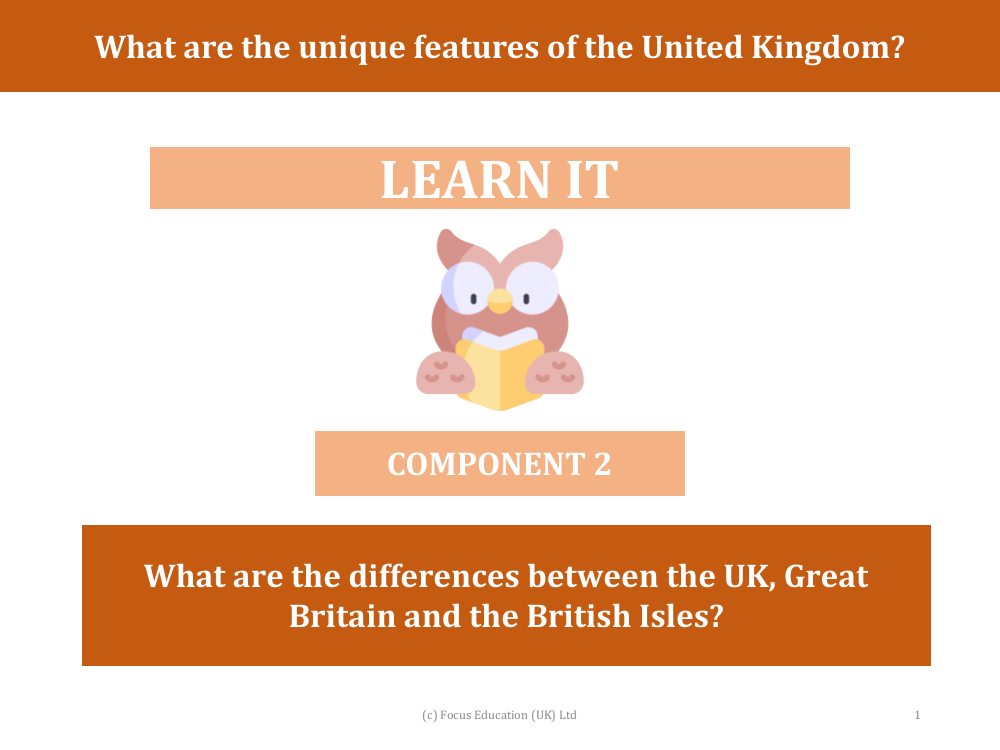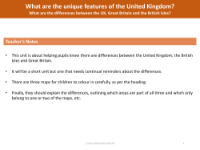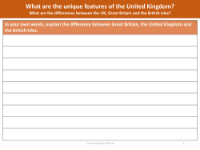What are the differences between the UK, Great Britain and the British Isles? - Presentation

Geography Resource Description
The presentation aims to educate pupils on the distinctions between the United Kingdom (UK), Great Britain, and the British Isles, which are commonly confused terms. The unit, though short, emphasises the importance of understanding these differences and incorporates the use of maps to visually distinguish the areas. The UK is a sovereign state that consists of four countries: England, Scotland, Wales, and Northern Ireland. Great Britain, on the other hand, is a geographical term referring to the island that includes England, Scotland, and Wales, but not Northern Ireland. The British Isles is a broader geographical term that encompasses over 6,000 islands, including the entire UK, the Republic of Ireland, and numerous smaller islands.
As part of the learning process, children are provided with three maps which they are instructed to colour carefully according to the headings. This hands-on activity is designed to help them visually differentiate between the UK, Great Britain, and the British Isles. They are then tasked with explaining the differences, identifying which areas are included in all three categories and which are unique to one or two. The presentation encourages pupils to articulate these distinctions in their own words, thereby reinforcing their understanding of the unique features of each entity and the relationships between them.



